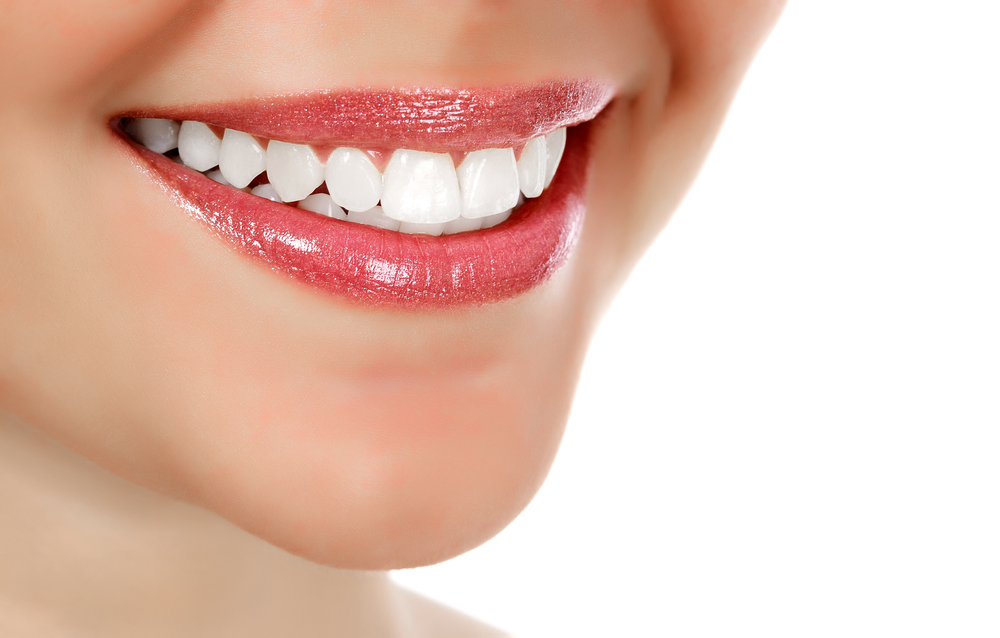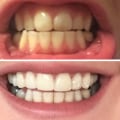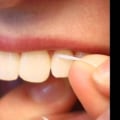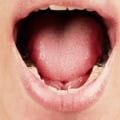Welcome to our comprehensive guide on achieving a radiant smile through the transformative wonders of cosmetic dentistry, with a particular focus on veneers. In this illuminating exploration, we delve into the realm of dental aesthetics, emphasizing the pivotal role played by cosmetic dentists in crafting flawless smiles that radiate confidence and enhance overall well-being.
Cosmetic dentistry, a specialized branch of dental care, encompasses a range of procedures aimed at improving the appearance of teeth, gums, and the overall smile. At the forefront of these aesthetic enhancements are veneers, which serve as an invaluable solution to common dental imperfections that may affect one's self-esteem.
A cosmetic dentist, a skilled professional well-versed in the artistry of smile enhancement, plays a crucial role in the application and customization of veneers. These ultra-thin, custom-made shells are meticulously crafted to cover the front surface of teeth, addressing issues such as discoloration, irregularities in shape, and gaps. Our journey into the world of cosmetic dentistry is anchored in the understanding that a beautiful smile is not merely a cosmetic indulgence but a gateway to improved self-confidence and overall emotional well-being.
TLDR
- Veneers are thin shells made of porcelain or composite resin that are custom-made to fit over the front surface of teeth.
- They are used to mask imperfections and enhance the appearance of teeth by covering chips, cracks, stains, discoloration, and gaps.
- Veneers can improve the appearance of chipped, cracked, stained, or discolored teeth and can last for many years with proper care and maintenance.
- They can be made from porcelain or composite resin, each offering different benefits such as durability, stain resistance, cost-effectiveness, and ease of repair.
Understanding Veneers in Dentistry
Let's start by understanding what veneers are. Veneers are thin shells made of porcelain or composite resin that are custom-made to fit over the front surface of your teeth. They're used to cover imperfections such as chips, cracks, stains, discoloration, and gaps, resulting in a more attractive smile.
Now that we know what veneers are, let's delve into the procedure of placing them and the different types available.
Definition of Veneers
Let's start by understanding the purpose and function of veneers in dentistry.
Veneers are custom-made shells that are bonded to the front surface of your teeth, effectively masking imperfections and enhancing your smile. They can be made from porcelain or composite resin, both of which provide excellent aesthetic results.
Purpose and Function of Veneers
To understand the purpose and function of veneers in dentistry, it's important to recognize that they're thin, custom-made shells that bond to the front surface of your teeth.
Some key points to consider about veneers are:
Veneers provide numerous benefits, including improving the appearance of chipped, cracked, stained, or discolored teeth.
With proper care and maintenance, veneers can last for many years.
Veneers differ from dental bonding in terms of materials used and the level of customization.
The cost of veneers can vary depending on factors such as materials and the number of teeth being treated.
Regular dental hygiene practices and routine check-ups are necessary to ensure the longevity of veneers.
Materials Used in Veneers
One of the key aspects to understand about veneers in dentistry is the variety of materials used in their construction.
Veneers can be made from either porcelain or composite resin. Porcelain veneers offer advantages such as durability and stain resistance, but they tend to be more expensive and require more maintenance.
Composite resin veneers, on the other hand, are more cost-effective and easier to repair, but they may not last as long as porcelain veneers.
When considering alternatives, it's important to compare veneers to crowns, bonding, and whitening to determine the best option for your specific needs.

Veneers Placement Procedure
Now let's talk about the process of getting veneers.
The placement procedure involves two main steps: examination and preparation, and the actual application of the veneers.
During the examination, the dentist will evaluate your oral health and discuss your goals for the treatment.
Then, in the preparation phase, a small amount of enamel will be removed from the teeth to create space for the veneers.
Examination and Preparation for Veneers
How do we examine and prepare for veneers in dentistry?
The examination process involves a thorough assessment of your teeth and gums to determine if veneers are suitable for you. Tooth preparation is then done, where a small amount of enamel is removed to make room for the veneers. Dental impressions are taken to create a custom veneer design. Temporary veneers may be placed while the permanent ones are being fabricated.
Shade selection, veneer thickness, and bonding technique are also considered. Post-placement follow-up and regular maintenance are essential for the longevity of your veneers.
Veneers Application Process
After examining and preparing the teeth, we proceed to apply veneers in dentistry through a meticulous placement procedure. Veneers are a popular choice for enhancing the appearance of teeth, but they do require regular maintenance to keep them looking their best.
The cost of veneers can vary depending on factors such as the material used and the number of teeth being treated. When properly cared for, veneers can last for many years, providing a long-term solution for improving the smile. While veneers offer many benefits, it's important to consider the potential drawbacks and alternatives before making a decision.
Additionally, veneers are durable and can withstand normal daily activities, but they may need to be removed if any issues arise. Veneers can also be a suitable option for individuals with sensitive teeth, as they can provide an additional layer of protection.
Types of Veneers
Let's talk about the different types of veneers used in dentistry.
The two main options are porcelain veneers and composite resin veneers.
Porcelain veneers are known for their durability and natural-looking appearance.
On the other hand, composite resin veneers are more affordable and can be applied in a single visit.
Both types have their advantages and considerations, so it's important to consult with a dentist to determine which option is best for your specific needs.
Porcelain Veneers
Porcelain veneers, which are thin, custom-made shells crafted from porcelain or composite resin, bond to the front surface of your teeth, effectively masking imperfections and enhancing the appearance of your smile. When considering porcelain veneers, there are several factors to keep in mind:
Cost: Porcelain veneers can be expensive, but they provide long-lasting results.
Pros and Cons: Veneers offer a natural-looking smile, but they may require some tooth preparation.
Durability: With proper care, porcelain veneers can last for many years.
Maintenance: Regular brushing, flossing, and dental check-ups are essential.
Alternatives: Veneers aren't the only option; dental bonding and teeth whitening may also be suitable.
Lifespan: Porcelain veneers typically last between 10 to 15 years.
Celebrities with Veneers: Many celebrities have transformed their smiles with veneers.
Veneers vs. Crowns: Veneers are more conservative and require less tooth reduction compared to crowns.
Veneers for Sensitive Teeth: Veneers can help protect sensitive teeth by providing an extra layer of insulation.
Veneers for Orthodontic Purposes: They can also be used to correct minor misalignments and create a straighter smile.
Composite Resin Veneers
Composite resin veneers are a popular type of veneer used in dentistry to enhance the appearance of teeth. They offer several benefits compared to porcelain veneers.
Composite resin veneers are more durable and cost-effective. They also provide better color matching, making them blend seamlessly with natural teeth.
While maintenance is required, with proper care, composite resin veneers can have a long lifespan.
However, it's important to note that there are alternative options available, and the pros and cons should be considered before undergoing the composite resin veneers procedure.
Frequently Asked Questions
How Long Do Veneers Typically Last?
Veneers typically last for many years with proper maintenance. Factors like oral hygiene, teeth grinding, and diet can affect their lifespan. Porcelain veneers tend to be more durable. If replacement is necessary, options and costs should be considered.
Can Veneers Be Whitened if They Become Stained Over Time?
Yes, veneers can be whitened if they become stained over time. Professional whitening treatments and at-home whitening kits can help restore the brightness of veneers. Regular dental hygiene and oral care are essential for maintaining veneer lifespan and preventing dental discoloration.
Are There Any Restrictions on What I Can Eat or Drink With Veneers?
With veneers, we can enjoy a wide range of food and drinks, but it's important to maintain good oral hygiene. Avoid staining beverages like coffee and alcohol, and choose veneer-friendly options. Regular care and hygiene are key to preserving veneer durability and preventing discoloration.
Will Getting Veneers Affect the Sensitivity of My Teeth?
Yes, getting veneers can potentially affect the sensitivity of our teeth. It's important to discuss this with our dentist during the veneers procedure to address any concerns.
What Are the Potential Risks or Complications Associated With Getting Veneers?
Potential risks and complications of getting veneers include tooth sensitivity, gum irritation, and the possibility of veneers becoming loose or chipped. It's important to maintain good oral hygiene and visit the dentist regularly for check-ups to ensure long-term satisfaction and minimize any side effects.






